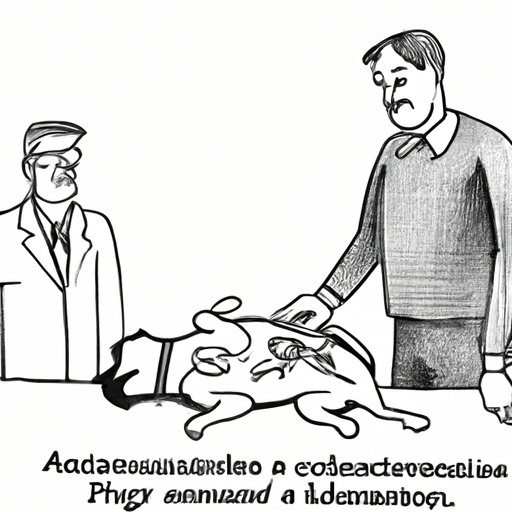As a caregiver for your furry friend, it’s key to be aware of the various health risks they may face. One such danger is the feared and often misunderstood condition known as Gastric Dilatation-Volvulus (GDV), more commonly referred to as a dog’s stomach flipping. This is a serious, life-threatening condition that requires immediate medical attention. Understanding the signs and knowing what to do can be a lifesaver.
Table of Contents
1. Understanding Gastric Dilatation-Volvulus
2. Recognizing the Signs of GDV
3. What to Do If Your Dog’s Stomach Has Flipped
4. Preventive Measures
5. Frequently Asked Questions
Key Takeaways
– GDV is a serious, life-threatening condition in dogs
– Recognizing the signs of GDV early is crucial
– Immediate veterinary intervention is necessary if you suspect GDV
– There are preventive measures you can take to reduce your dog’s risk of GDV
Understanding Gastric Dilatation-Volvulus
GDV occurs when the dog’s stomach fills with air and then twists (volvulus). This prevents gas and liquids from escaping the stomach, which causes it to become distended. The distended stomach can put pressure on other organs and can prevent blood flow to the heart. In severe cases, it can lead to shock or death.
According to VCA Hospitals, certain breeds are more susceptible to GDV. These include large, deep-chested breeds such as Great Danes, Saint Bernards, and Weimaraners. However, any breed can potentially suffer from this condition.
Recognizing the Signs of GDV
The symptoms of GDV can appear suddenly and may include:
- Excessive drooling
- Restlessness
- Swollen or distended abdomen
- Attempts to vomit without producing anything (“dry heaving”)
- Rapid heart rate
- Weakness or collapse
It’s important to remember these symptoms as they can be the difference between life and death for your pet. For more information on understanding these symptoms, visit One Top Dog.
What to Do If Your Dog’s Stomach Has Flipped
If you suspect your dog’s stomach has flipped, it is crucial to act immediately. GDV is a medical emergency. The American Veterinary Medical Association stresses that every second counts when dealing with this condition.
Here’s what to do:
- Do not try to treat this condition at home. This is a serious medical emergency that requires professional treatment.
- Contact your vet immediately. If it’s after hours, find the nearest emergency veterinary clinic.
- Transport your dog carefully. Handle your dog gently to avoid causing further distress.
Preventive Measures
While there’s no guaranteed way to prevent GDV, there are steps you can take to reduce your dog’s risk:
- Feed your dog small meals throughout the day instead of one large meal.
- Avoid vigorous exercise before and after meals.
- Consider a prophylactic gastropexy surgery for at-risk breeds.
For more tips on preventing GDV, check out One Top Dog’s guide on dog health.
Frequently Asked Questions
Q: Can a dog’s stomach flip from running around after eating?
A: While the exact cause of GDV is not known, there is a correlation between large meals and vigorous exercise immediately before and after eating. It’s best to allow your dog some calm time after eating.
Q: Can a dog survive a flipped stomach?
A: Yes, but immediate veterinary intervention is necessary. The sooner the dog is treated, the better the chances of survival.
Q: How can I prevent my dog’s stomach from flipping?
A: Feeding your dog smaller, more frequent meals and avoiding vigorous exercise around mealtimes can help. For at-risk breeds, prophylactic gastropexy may be an option.
Remember, as a caregiver, your pet’s health is in your hands. Stay informed, know the signs, and always be ready to act in case of emergencies. More valuable insights can be found through One Top Dog.



